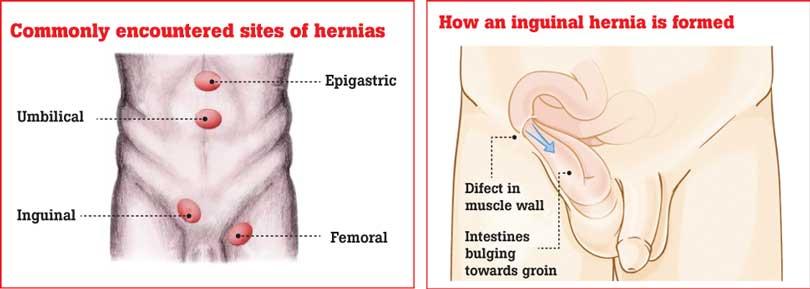17 Jan 2020 - {{hitsCtrl.values.hits}}

 Do you believe in the genesis creation narrative? Some say that God formed man from the dust of the ground and breathed into his nostrils the breath of life and man became a living being. Some say that man was created from fire and clay. Respecting all these theories which have been proven in different ways, scientists are still amused by the way our body has been created, interconnecting tiny little cells, functioning together to create life.
Do you believe in the genesis creation narrative? Some say that God formed man from the dust of the ground and breathed into his nostrils the breath of life and man became a living being. Some say that man was created from fire and clay. Respecting all these theories which have been proven in different ways, scientists are still amused by the way our body has been created, interconnecting tiny little cells, functioning together to create life.
The human body is formulated in a way which handles bodily functions for survival in the most effective manner. Each organ within our body has a vital role to play thus providing them with an exact location to be placed in, so the functions will be carried out with maximum efficiency.
What will happen if these organs bulge out from the respective walls and boundaries? Is it really possible and what would be the final result?
Yes, it is definitely possible and that is what you call a Hernia. “A hernia is an abnormal protrusion of a part of an organ through the wall of its containing cavity. Here, I will discuss mainly on hernias affecting the abdomen and groin. So, the wall we’re talking about is the abdominal wall and the organs could be bowel/ fatty tissue etc. that can protrude” says Dr. Chinthaka Wijesurendere, MBBS, MRCS, MD (Surgery), Consultant General Surgeon.
Types of Hernia
 “When it comes to abdominal hernias, broadly they could be groin hernias and ventral (front of the abdomen) hernias. Groin hernias are subdivided to inguinal and femoral. Inguinal hernias form about 70% of all hernias that we see,” underscored Dr. Wijesurendere. “Epigastric, umbilical and paraumbilical hernias are primary ventral hernias. Incisional hernia is a form of ventral hernia that arises via a defect from a previously closed surgical site in the abdominal wall (a prior operation),” the doctor added.
“When it comes to abdominal hernias, broadly they could be groin hernias and ventral (front of the abdomen) hernias. Groin hernias are subdivided to inguinal and femoral. Inguinal hernias form about 70% of all hernias that we see,” underscored Dr. Wijesurendere. “Epigastric, umbilical and paraumbilical hernias are primary ventral hernias. Incisional hernia is a form of ventral hernia that arises via a defect from a previously closed surgical site in the abdominal wall (a prior operation),” the doctor added.
The commonly encountered sites of hernias are illustrated below.
The figure below illustrates how an inguinal hernia is formed
Risk factors and symptoms
To develop a hernia there should be a weak point in the abdominal wall that could be congenital (from birth) or acquired. Congenital defects are seen in hernias among children and adults where a weak point is present from birth. Some have an inherent tendency to develop week abdominal wall (E.g.: Connective tissue disorders). Most importantly the risk factors that we have some control over are as follows
The presentation would vary depending on the location
Some of the symptoms of an inguinal hernia may include:
Ventral hernias described above could present with a bulge or discomfort at the belly button (naval) or other sites as shown in the diagram that may or may not settle with lying down.
“There is a risk that part of the intestine may become trapped in the abdominal wall, which can cause a loss of blood flow to this section of the intestine. This condition is called a ‘strangulated hernia’ and typically causes severe pain, an increased heart rate and the bulge will be very painful when touched. If the blood supply to the intestine does not resume quickly, the part of the intestine that is protruding may die. Someone with a strangulated hernia requires urgent surgery” explained Dr. Wijesurendere.
Need for proper medical advice
A person should see a doctor if he or she notices a bump in the groin area or anywhere in the abdomen, particularly if it is painful. The doctor would likely do a physical examination of the area to feel the bump and get an idea of its size. A patient may be asked to cough to visualise well and feel the bump. A doctor may push the hernia back into place temporarily using gentle pressure.
“Generally, a good examination is all that is needed to diagnose an inguinal hernia. But an ultrasound scan or a CT scan may be used by your surgeon selectively for more complex hernias to assess the anatomy better and plan surgery,” he emphasised.
Fixing the defect and use of mesh
Inguinal hernias- They can be treated with open or laparoscopic surgery. In most inguinal hernias seen in adults, the weakened area is repaired using an artificial mesh. Laparoscopic repair is an option particularly if there are hernias on both sides or if it’s a recurrent hernia (failed previous open repair) where there is an advantage of having smaller scars with a quicker recovery when compared to open surgery.
Ventral hernias – Different surgical options exist for this type of hernia. They are both open and laparoscopic which is tailor-made to the individual patient.
“However, it is extremely important to address risk factors before the operation ideally for a better outcome – such as quitting smoking and the reduction of weight as persistent causes could result in a recurrence even after a successful surgery,” he said.
Proper after care Inguinal hernia
Activities in daily living- Most people can do light activities, such as shopping, after 1 or 2 weeks. You should also be able to return to work after 1 or 2 weeks, although you may need more time off if your job involves manual labour.
Gentle exercise, such as walking, can help the healing process, but you should avoid heavy lifting and strenuous activities for about 4 to 6 weeks.
Driving - It’s usually advisable to avoid driving until you’re able to perform an emergency stop without feeling any pain or discomfort (you can practice this without starting your car)
Sexual intercourse - You may find sex painful or uncomfortable at first, but it’s usually fine to have sex when you feel like it
For other hernias – the above stands but it may vary based on the complexity of hernia/repair
A hernia left untreated can give rise to various complications
Prevention better than cure
Take home message
21 Dec 2024 5 hours ago
21 Dec 2024 21 Dec 2024
21 Dec 2024 21 Dec 2024
21 Dec 2024 21 Dec 2024
21 Dec 2024 21 Dec 2024